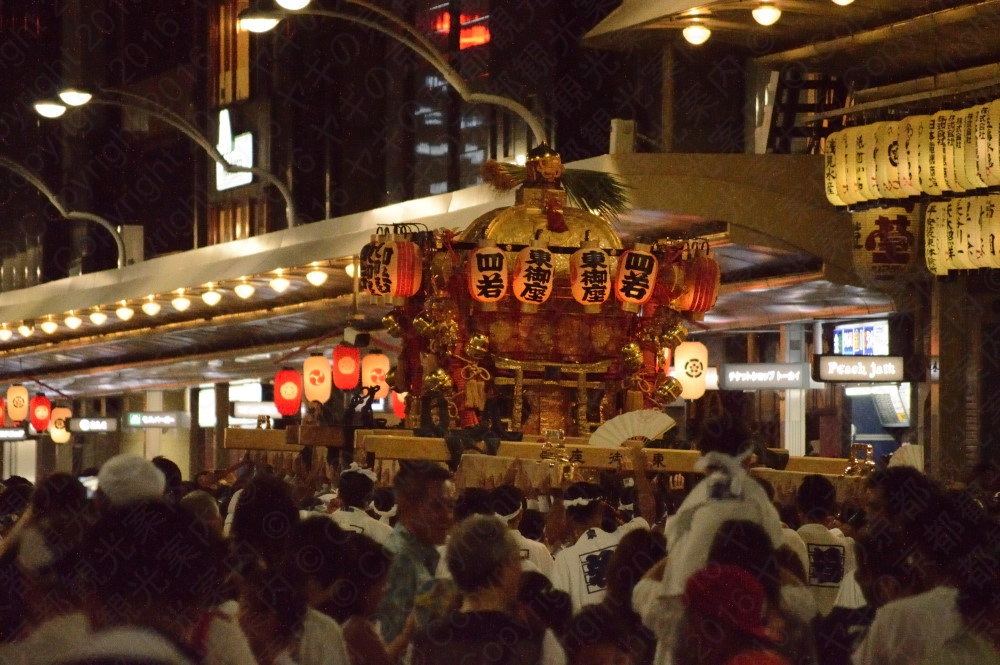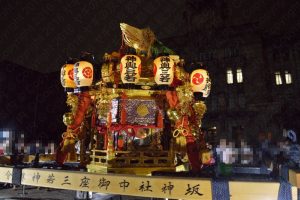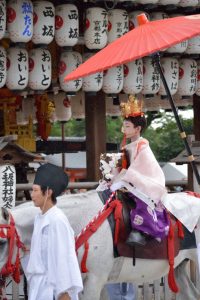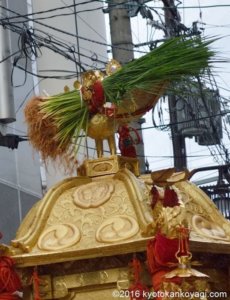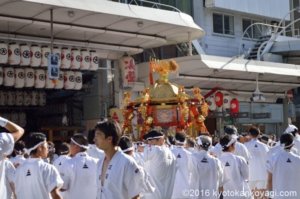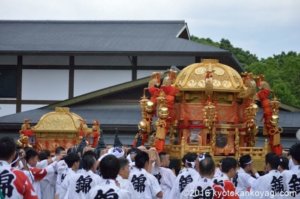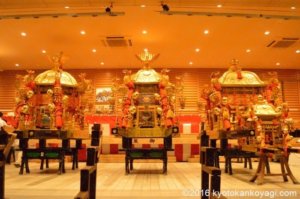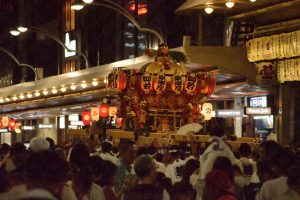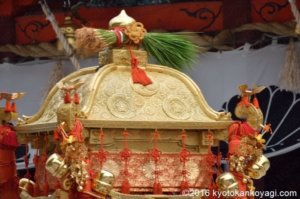The history and the importance of Mikoshi in Gion matsuri 祇園祭の本質と神輿渡御
In 869, in Kyoto, many people suffered smallpox, dysentery, and other epidemics because ill-prepared draining of wasted water and excrement. They mixed together and caused maladies with hot and damp whether.
In ancient times, it was believed that Shinrei, a kind of spirit or phantom, caused Malady and disaster. To save the country, the imperial court gave Urabeno-Hiramaro (卜部日良麻呂), the priest of Gion-sya, an order to hold Goryo-e at Shinsen-en (神泉苑), the largest pond in ancient Kyoto. (The picture above.). Gion-sya is an ancient name of Yasaka shrine. Yasaka shrine is a Shinto shrine today but it used to be a Buddhist temple called “Gion-sya”, or “Gion Kanjinin.”
Urabeno-Hiramaro put the spirit of Gozu-tenno, the Buddhist Deity, into one of three portable shrines and sent them from Gion-sya to Shinsen-en and placed 66 hokos (矛) there . His aim was to put down Shinrei with the help of Gozu-tenno. This is the origin of Gion matsrui and called Gion Goryo-e.
It has been 1150 years since then, the purpose of Gion matsuri has never changed: People bring the Deities on Mikoshi to Kyoto, to calm down Shinrei with help of Gozu-tennno/Susanoo no Mikoto to save people in suffer.
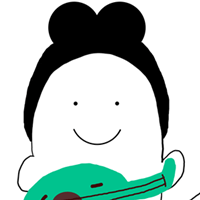
In Japan, Gozu-tennno and Susanoo no Mikoto were fused
because of the co-existence of Shinto and Buddhism.

In ancient times, Gion-sya/Yasaka shrine was located outside Kyoto city.
Gion matsuri is famous for Yamaboko floats and their parade but the most important thing is Mikoshi.

More info. for Gion matsuri? Click the links below.


Three Mikoshi in Gion matsuri
Overview
In Gion matsuri, we have three Mikoshi; Nakagoza, Higashigoza, and Nishigoza.
Priest bring the Deities of Yasaka shrine into them and people carry them to the center of Kyoto. Mikoshi and the Deities stay for a week at a place called Otabisho. Otabisho is a small shrine Shinto/Buddhist Deity stays in temporary.
Today, we have only one Otabisho at Shijo Shinkyogoku: Yasaka shrine Otabisho (the green alien in the map).
On the other hand, there used to be two Otabsiho: Omandokoro Otabisho (the blue alien) and Shoshoi Otabisho (the purple alien). In the late 16th century, Toyotomi Hideyoshi put them together and moved to Yasaka shrine Otabisho.
Taishogun/Gozutenno Mikoshi (known as Nakagoza today), and Hachioji Mikoshi (known as Nishigoza today) stayed at Omandokoro Otabisho and Syosyoi/Harisainyo Mikoshi (known as Higashigoza today) stayed at Shoshoi Otabisho.
In the days of old, they left Gion-sya for their destination. The black line in the map is a route for Omandokoro Otabisho and the red line is Shoshoi Otabisho. They stayed there for a week and they departed for Gokusya/Matatabisha (the red annotation) for a ritual to be held there. After the ritual was finished, they started in line for Gion-sya.
A cross road near Gokusya/Matatabisha was called Rekken no Tsuji (the red alien). It was the best place to admire Mikoshi and emperors and court nobles made bleachers to see them along Sanjo street.
These days, only Nakagoza headed for Gokusya/Matatabisha. This year, 2019, as commemorate the new Imperial era Reiwa and the 1150th anniversary of Gion matsuri, three Mikoshi head for Gokusya/Matatabisha for a ritual for the first time in nearly 400 years.

DO NOT MISS IT!
Nakagoza 中御座
The Deity 御祭神
Susano no Mikoto. Gozu tennno in the days of Shinto and Buddhism fusion.
In Onmyodo, the Japanese Yin-yang philosophy, he is a guardian of every orientation. He can make our wish come true.
The Mikoshi 神輿
Carried by the members of a team called Sanwaka Shinyo kai. 600 people take turn carrying.
Only Nakagoza is led by Shinpo gyoretsu, Hoensensyoji Masakaki, a large tree and Kuzakomagata Chigo and heads for Shinsen-en, the first Gion matsuri was held.
It has a Ho Oh bird on the roof and a hexagonal prism-shaped body. It resembles Nishigoza. Nishigoza has also has a Ho Oh but an octagonal-shaped body.
The easiest way to tell them is to see Kanji letters on outfit the carriers on. If you find letters “三若” or triangle, they carry Nakagoza.
On the other hand, if you find “錦”, they carry Nishigoza.
They stay Yasaka shrine Otabisho like this.

From left to right: Nishigoza, Nakagoza, and Higashigoza.
Higashigoza 東御座
The Deity 御祭神
Kushinadahime no Mikoto. Harisainyo in the days of Shinto and Buddhism fusion. She is a spouse of Susanoo no Mikoto.
In Onmyodo, the Japanese Yin-yang philosophy, she is Toshi Toku Shin, the Deity of good orientation, and brings us prosperity.
The Mikoshi 神輿
It has a Sokaren, an onion like object, on the roof and a quadrangular prism-shaped body and a baby Mikoshi called Higashi Wakagoza.
Carried by the members of a team called Shiwaka Shinyo kai. 450 people take turn carrying.
Nishigoza 西御座
The Deity 御祭神
Yahasira no Mikogami. Hachioji in the days of Shinto and Buddhism fusion. They are sons of Susanoo no Mikoto and Kushinadahime no Mikoto. One of them is Ukano Mitama no Mikoto, the Detiy enshrined in Fushimi Inari Taisha.
In Onmyodo, the Japanese Yin-yang philosophy, they are called Hchi Shogun, the Deity of bad orientation to save us.
The Mikoshi 神輿の様子
Carried by the members of a team called Nishiki Shinyo kai. 600 people take turn carrying.

